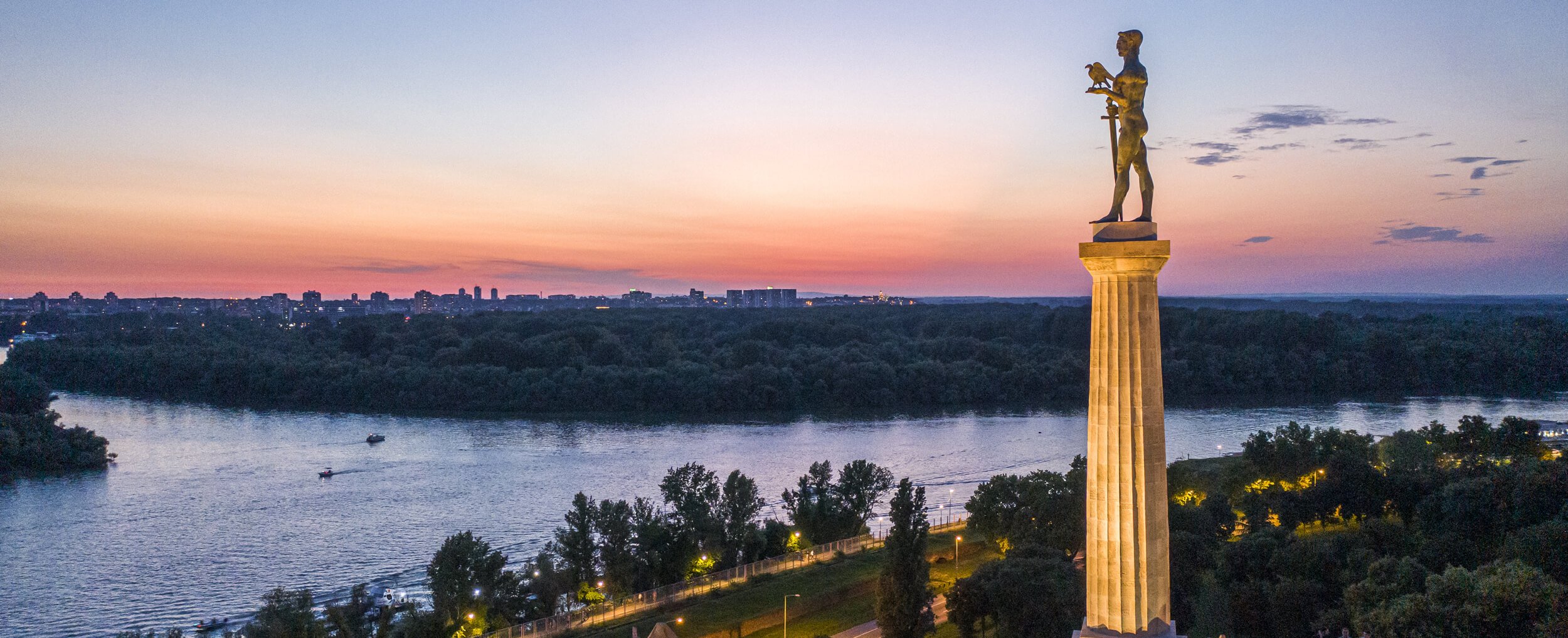Changes in architectural concepts during Ottoman and Austrian rule over the fortress are especially visible in the Sahat Gate complex, next to which stands another gate today. It was built in the axis of the Stambol Gate during the Austrian rule of Belgrade, during the third decade of the 18th century. There are four decorative […]
The bronze figure of a man with a cloak is a monument paying tribute to the famous Serbian ruler, writer and builder Despot Stefan Lazarevic, during whose government Belgrade became the capital of Serbia for the first time. Despot Stefan, the son of Prince Lazar Hrebeljanovic and Princess Milica, inherited Serbia, which had been dealt […]
Despot Gate and Castellan Tower is often referred as to Eastern Upper town’s Gate. During the Middle Ages this was the main entrance to the Belgrade’s Fortress. Alongside with the north-eastern rampart, it represents the best preserved segment of the medieval Upper Town dating from the first half of the fifteenth century. The Despot’s Gate, […]
The Outer Stambol Gate is located in the direction of the main entrance to the fortress. A wooden bridge was originally placed in front of it, which was replaced by an earthen embankment at the end of the 19th century. The gate is characterised by a very simple construction and its original shape has been […]
During the 18th century, in three thorough reconstructions, the fortress in Belgrade was turned into a modern bastion artillery fort. It was then that the fortress got its present appearance, for the most part. During one of the reconstructions, in the third decade of the 18th century, the first ravelin was built according to the […]
Approximately halfway between the gates on the Great Ravelin, there is a fortress guardhouse facing the Stambol Gate. Today, it houses the Gallery of the Museum of Natural History, which occasionally organises exhibitions of its collections of minerals, flora and fauna from around Serbia. The building was erected in the third decade of the 19th […]
This gate, along with the bridge, serves as a passage from the Large Kalemegdan to the Fortress. It was built in the eighteenth century. It owns its name to the leader of the First Serbian Uprising, Karadjordje, who passed through the gate during the siege of the Fortress at the start of the 1807. The […]
During the great reconstruction works on the fortress during the Austrian rule of Belgrade in 1717–1736, the fortifications of the southeast front were built on the basis of the design of the engineering colonel Nicolas Doxat de Demoret. During that time, the Stambol Gate — with its passages, side rooms, casemates and a facade bearing […]
Although it was founded by decree of Prince Milan Obrenovic on 10th August 1878, the museum was not opened to the public until 1904. Its original location was a small octagonal building above the Roman well in the Upper Town. After being destroyed in the First World War, the museum was reopened on 2nd April […]
The main entrance to the Upper Town today is the gate with the Sahat Tower. The clock tower was a recognisable detail in Turkish bazaars but it rarely appeared in fortresses, so this Belgrade tower can be considered an unusual example. It was built in the middle of the 18th century and is characterised by […]

